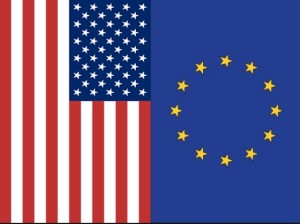Introduction
For the end of summer it seems appropriate to look ahead at what environmental issues need to be addressed in the coming year. Better to do this in August rather than in December so there is more time to process the priorities and plan ahead on how to push for them. The European Environmental Bureau (EEB), Europe’s largest coalition of grassroots environmental organisations, has obliged us with an assessment of its priorities for the European Union for next year.
The recent European Parliament election includes a number of elected officials skeptical of EU active engagement with many issues, including environmental matters. As a result, it is all the more important for the environmental community to focus on the critical issues.
The easiest way to approach such a report is just to work our way through the eight priorities, highlighting aspects of the discussion. The eight priorities are: Sustainable development as the overarching framework; Avoiding a harmful EU – US trade and investment partnership; Reducing air pollution; Fighting climate change and improving energy security; Creating a circular economy through better resource management; Improving environmental governance; Avoiding harm to biodiversity and ecosystems; Phasing out hazardous chemicals.
1. Sustainable development
Like others, the EU has been preoccupied with the economic struggles facing many Member states and sustainable development has been overshadowed by economic development. In such circumstances, and with a recovery beginning in some states, it is an opportune time to remind everyone that we are using up natural resources at such a pace and scope that there may be few resources left to sustain an economy. It is time to reassert sustainable development as an overarching principle for EU policies and legislation.
A set of global Sustainable Development Goals (SDGs) is scheduled to be completed in 2015. As Europeans, and other developed economies, continue to consume resources, we leave the poorest countries with little of the “environmental space” they need to develop. As a result, the EEB stresses that such SDGs need to make “respect for planetary boundaries a central priority and thus address the over-consumption in the developed world, including Europe.” At 3. The EEB also calls for an updating of the EU Sustainable Development Strategy and the Europe 2020 strategy (on climate change and energy) to reflect the SDGs that are under consideration.
EEB
In addition, there is need for a revision of the Commission’s internal impact assessment process that has become hesitant to adopt legislative proposals that are protective of the environment while freely adopting measures to protect the economy. A rebalancing is in order.
Finally, economic reforms need to shift the tax base from labour to pollution and resources, and to eliminate subsidies that undermine the preservation of our natural resources. Another means of preserving these resources is by requiring environmental accounting in national budgets.
2. Avoiding a harmful EU – US trade and investment partnership
The EU and United States are in the midst of negotiating a trade and investment agreement, called the Transatlantic Free Trade Agreement (TAFTA) in the US and the Transatlantic Trade and Investment Partnership (TTIP) in the EU. Since both parties agree that trade tariffs in the US and EU are low, the focus has been on non-tariff barriers. A major concern is that the negotiations are attempting to include an investor-state dispute (ISD) settlement mechanism. Such mechanisms allow private investors or companies to challenge sovereign governments over public interest policies that affect trade, and the dispute is settled by offshore tribunals, typically comprised of three private sector attorneys. The process resembles private arbitrations that are used by businesses to reduce the cost and length of legal proceedings. The problem, as pointed by EEB, is that in the trade agreements such a process bypasses well-established legal systems and property rights in both the US and EU. Under such ISD mechanisms, powerful private business interests are enabled to attack consumer, public health and environmental protections in the EU without any public participation in the dispute resolution process, and with privileges greater than any enjoyed by private companies in the US or EU. The EEB report notes that a recent trade agreement between Australia and the US does not include an ISD mechanism. For the same reasons, the EEB opposes the inclusion of an ISD mechanism in the recently concluded trade negotiations with Canada and the EU, and urges the EU Ministers and Parliament to reject such an agreement.
Besides the ISD issue, other provisions in the negotiations weaken established consumer and environmental safeguards. For instance, there are attempts by industry representatives to create procedures for harmonizing standards and eliminating other “trade irritants.” And there is a proposal to allow amendment of provisions of the agreement without domestic ratification, which would allow negotiators to postpone controversial provisions and to include them later without oversight by Parliament or Member Sates. If successful, such provisions would take away the democratic power for citizens to set such standards and approve provisions, yet the citizens are the ones who will have to live with the results of any weakened regulatory standards and provisions.
Under these circumstances, the EEB report calls for full public consultation on the agreement.
3. Reducing Air Pollution
While air in the EU has improved in many places in comparison with the last century, significant dangers remain, especially in cities where over fifty percent of people live and where more come every day. Air pollution is the leading cause of deaths in the EU, with over 400,000 dying prematurely, and it causes a variety of illnesses, hospitalizations, and lost working days. More than 90% of people in cities are exposed to levels of air pollution above the World Health Organisation recommended levels. Health-related economic costs for air pollution have risen to between €330 and €940 in 2010 for the entire EU. Clearly, more needs to be done.
While the EU, in December 2013, revised the National Emission Ceilings (NEC) Directive and submitted a proposal to address emissions from medium scale combustion (MCP) installations, the EEB report finds these actions inadequate.
Once again within the EU we find a new reluctance to adopt hard targets, or any targets at all, likely as a result of pressure from the UK and other conservative administrations. For instance, the NEC sets targets for 2020 but those targets are in fact less ambitious than what
Member States would achieve anyway by 2020 simply by implementing existing EU and national legislation. These are targets with the arrows already shot into them. And the NEC commitments do not include mercury, a most dangerous substance.
For 2025 there are no legally binding targets, which invites delay, and the 2030 targets would leave 260,000 premature deaths, which is more than half of today’s levels. That’s not much progress, especially if you or a loved one is among the 260,000 deaths.
Among other recommendations, the EEB report calls for the EU to strengthen requirements to cut emissions from some of the problematic sectors, including agriculture and transport, and for an express right of access to justice for citizens and NGOs.
4. Fighting Climate Change and Improving Energy Security
With a global climate change agreement hoped for by 2015 in Paris, with implementation to start by 2020, EEB argues that the EU’s best leverage in getting a credible deal done is to adopt an ambitious 2030 climate and energy policy. The recent European Commission proposals (January 2014) on climate change are not ambitious, with only a 40% GHG target and renewable target of at least 27%, but not allocated to individual States, and energy efficiency targets delayed until full consideration of the Energy Directive.
In contrast, the “EEB believes that the targets should be set at an adequate level to deliver at least 60% domestic GHG reductions, 40% end-use energy savings and a 45% increase in the share of renewable energy.” At 8. All of these measures are necessary to remain below a 1.5°C rise in global temperature, and to build a low-carbon, green economy.
On the difficult issue of biofuels, and the relation with food supply, EEB points out that the European Commission proposed, in 2013, a fix that includes accounting for emissions from indirect land use change (ILUC) in assessing carbon emissions from biofuels, and lowering the mandate to 5% for biofuels made from foodcrops.
5. Creating a circular economy through better resource management
In the last issue of the magazine, we reviewed the EEA Signals report, Well-being and the environment, which offered a review of the movement toward a green and circular economy. The EEB urges completion of ongoing revisions to a number of Directives that will underscore the focus on resource efficiency, the cornerstone to a circular economy. In particular, revisions to the Energy label, Ecodesign, Waste Framework, and Landfill Directives are critical to optimizing resource use along the full life cycle of products put on the European market. The EEB also encourages more actions on green public procurement and a more ambitious packaging waste Directive.
6. Improving environmental governance
While there is a growing body of EU law covering environmental matters, the implementation and enforcement of that law remains weak, especially because of the widely divergent application and lack of consistency in different Member States. It’s as if there is an arsenal of ammunition but not always the weapons to use nor the trained soldiers to fire the weapons. In many ways, the EU is more progressive and broader in environmental protection efforts, certainly for climate change, than the United States, while the United States is better equipped for enforcement, with layers of well-armed specialised regulatory and enforcement agencies at the local, state and federal level.
UNEP
The EEB sees the need for EU-wide standards, and more resources, for inspections with strengthened reporting and monitoring requirements.
7. Avoiding harm to biodiversity and ecosystems
The expected failure to meet the 2020 EU targets for halting the loss of biodiversity and degradation of ecosystem services drives another priority for the EEB. The main pressures on our biodiversity remain unsustainable agricultural practices, modification of ecosystems for energy production, and chemical and air pollution. Unfortunately, the increasing levels of global warming will continue to aggravate these pressures, with resulting intensity and frequency of extreme weather events, including heat waves, floods and droughts.
Certain EU measures on the horizon can help to address these problems, especially the implementation of river basin management plans (RBMPs), the adoption of new regulations on Invasive Alien Species, one of the deadliest threats to loss of EU biodiversity, and new protections for soils.
8. Phasing Out Hazardous Chemicals
The focus for addressing concerns about hazardous chemicals is on the EU Registration, Evaluation, Authorisation and Restriction of Chemicals (REACH) program, on nanotechnology, and on control of mercury.
Within the REACH program, much attention was placed on dealing with the 1,400 substances that were deemed to be Substances of Very High Concern (SVHC). For these SVHC, the plan was to replace them or restrict their manufacture, marketing or use, yet by now only 22 substances have been on the list that requires substitution. Not much has been done in particular with the category of SVHCs known as “endocrine disrupting chemicals,” or EDCs that have significant health risks. Of particular concern is the fact that regulatory control over these REACH chemicals requires submission of data from the chemical companies and yet only 69% of the registration filings are in compliance with EU legislation. Among other recommendations, the EEB calls “… upon the European Commission to increase human and financial resources for the phasing out and substitution of SVHCs and ensure that no SVHCs will be given an authorisation of use whenever safer alternatives are available in the market.” At 19.
On nanotechnology, the science and business of manipulating matter at the molecular scale, the EU is stepping backward. From commitments in 2009 to adopt specific regulatory controls over nanotechnology, the European Commission recently has taken the position that “nanomaterials [NM] are the same as common chemical substances,” and as a result many of the provisions of REACH do not reach nanomaterials. In response, the EEB recommends that the EU “ensure the strict application of the ‘no data, no market’ principle, meaning that any NM-containing products that have not undergone specific nano-safety assessments may not be placed on the market, in particular not in ordinary consumer products.”
Finally, the EEB addresses the concerns over mercury and its compounds, which are “highly toxic, can damage the central nervous system and are particularly harmful to foetal development.” At 18.
Since the environmental disaster in Minimata, Japan, from exposure to mercury, regulatory controls have been advanced and international treaties have begun to offer protection against mercury poisoning, and the EEB urges the EU to develop the necessary policies to implement the Minamata Convention on Mercury and to assure that the Convention is ratified and implemented as fast as possible and that products and processes with mercury are phased out, especially when there are effective and efficient alternatives.
Conclusion
While much attention in 2015 will focus on the critical climate change negotiations, leading to a hoped-for advance in Paris, the EEB report on other priorities is useful to remind us that there is much work to be done on a number of fronts. And the recent EU elections serve as a wake-up call for the environmental community to muster its support for the day-to-day priorities for environmental protections efforts.
Sources
EEB’S Priorities for the European Union for 2015 (10 July 2014). www.eeb.org/EEB/?LinkServID=0B85FFCE-5056-B741-DB4F32FCD1A8F49E&showMeta=0
“The European Environment Agency (EEA) on Well Being and Environment,” in the Report section of irish environment magazine (July 2014). www.irishenvironment.com/reports/european-environment-agency-eea-well-environment/
“Indirect Land Use Change,” in the iePEDIA section of irish environment magazine (March 2013). www.irishenvironment.com/iepedia/indirect-land-use-change/
“REACH,” in the iePEDIA section of irish environment magazine (February 2014). www.irishenvironment.com/iepedia/reach/





No comments yet, add your own below